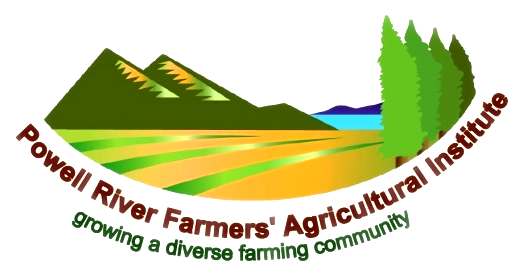Women Farmers & Young Farmers


Women Farmers and Young Farmers
Although the number of BC farms fell by more than 11% between 2011 and 2016, the number of female and young BC farmers actually increased during the same period.
Young Farmers
2016 was the first census year since 1991 in which there was real growth in the number of young farmers. Young farmers now comprise 6.9% of BC farmers (compared to just 5.4% in 2011). Young farmers are often first-generation, starting from scratch rather than taking over a family farm. They are hard-working (the 2010 Census of Agriculture reported that 25% of BC farm operators under age 35 worked off farm for more than 40 hours /week).
Young farmers are passionate about the land and enthusiastic about creating a new agricultural model based on sustainability and respect for the land and animals. They come from urban settings, often leaving jobs in large organizations with the desire to connect to the natural world. Some have a farming background but many have no roots in the country. Many are college-educated and enter farming with the aim of practicing organic diversified farming and direct marketing their products. Many have moved away from traditional agricultural models requiring capital-intensive inputs for land and equipment.
The young farmer is operationally lean—leasing land, using ingenuity and resourcefulness to lower costs, connecting through social media, and marketing directly to consumers. These young farmers are looking for new ways to work together: co-operative farming, small distribution networks, shared farm equipment and food storage areas, and establishing joint commercial kitchens for the preparation of value-added products.

Women Farmers
Women have long played a lead role in agriculture in the developing world, but have traditionally tended to work behind the scenes on North American and European farms. This is changing.
In the UK the number of women farmers grew by 300% from 2001 to 2014.
The number of US farms operated by women tripled between 1978 and 2007.
The proportion of BC farmers who are female outpaces the national average by 8%, placing BC at the forefront of a socio-economic phenomenon that Census Canada describes as “altering the face of what we think of when we picture North American farmers.”
10 (19%) of the 53 Powell River farms identified in the 2018 farm study are operated solely by women
29 (67%) of the remaining 43 local farms have a woman listed as co-owner or co-operator
39 (46%) of the 84 local farm operators identified in this study are female
To date, there has been no formal or comprehensive study of the rise of women farmers in BC. However, a 2006 study of Canadian Farm Women funded by Status of Women Canada, and a 2013 US Department of Agriculture study of female operated farms can offer some global insights into the behaviours and impact of women in the primary agricultural sector:
Ways in which woman-run farms might differ from male run operations
Attributes and values women farmers bring to the primary agriculture sector
Female Farm Operations
SIZE OF FARM OPERATIONS
The US study found that growth in female operated farms was largely within the small farm category (89%), and that growth was especially dramatic in fledgling farms with no sales income in their first year: these grew by 1200%. Even in 2007, 75% of female operated US farms were small farms. However, rapid growth in a very small group (5%) of female operated US farms also occurred at the high end of farm income (FCR of $100,000+).
Women-operated farms with FCR of $500,000 to $999,999 grew by 277%
Those with sales of $1 million or more grew by 714%, from less than 300 in 1982 to nearly 2,000 in 2007.
SPECIALIZATION
In 2007:
45% of US female operated small farms specialized in grazing livestock (beef, horses, sheep and goats)
46% of the million-dollar farms operated by US women in specialized in poultry and eggs, while 21% of these high earning farms focused on specialty crops
Motivations of Women Farmers
In 2016, the age spread of Canadian women farmers was as follows:
26% Under 35 years of age
31% 35 to 54 years
28% 55 and older
On average, women farmers appear to be better educated than their male counterparts. 61% of American female farm operators have education beyond high school, compared with only 47% of US male operators. The 2006 Status of Women report also found that Canadian female farmers were generally better educated than male farmers. The 2006 Status of Women study also noted that:
Canadian female producers want to grow healthy, wholesome food for themselves and their customers.
A number of women develop viable specialized businesses within the larger farm operation, such as herb or tea production.
Women explicitly link their personal experiences as farmers to national and global economic and policy influences.
It is important to understand clearly the range and depth of forces that motivate women’s connections with their farms and communities. In spite of the overwhelming pressures of poor finances and a seemingly hostile federal policy environment… and the anger and despair these realities can provoke, women retain incredibly strong attachments to their histories, their communities and their land.
- Status of Women Canada
2006 Report on Canadian Farm Women and Agricultural Policy
Canadian Farm women in the Status of Women study identified major values that encompass the realities of farming as they experience it:
Support and enhance the quality of life in rural communities
Ensure that both food and the environment are safe and healthy
Advocate for an equitable federal domestic food policy
Educate consumers and communities about the contributions that farms and farmers make to society
Strengthen the voices of farm families
Promote gender-inclusive, farm-family-friendly sustainable agricultural policies that support social and cultural values as well as economic needs
